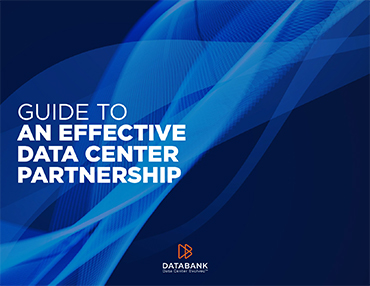Ecommerce was one of the fastest-growing areas of business long before COVID19 hit the world. The pandemic did, however, underscore the importance of having a robust ecommerce strategy. With that in mind, here is a quick guide to what you need to know about data center connectivity for ecommerce.
Understanding data center connectivity
Data center connectivity refers to the network infrastructure that enables communication between various components within a data center and facilitates connections to external networks, such as the internet and private networks.
It covers a variety of components, including routers, switches, cables, and fiber optics, which work together to transmit data efficiently and reliably. Additionally, data center connectivity may incorporate technologies such as virtual private networks (VPNs) and software-defined networking (SDN) to optimize network performance and security.
The importance of data center connectivity for e-commerce
It is impossible to overstate the importance of data center connectivity for ecommerce. Here are just five of the reasons why it matters.
Website responsiveness
By leveraging high-speed network connections and optimizing data transmission protocols, data centers can deliver web content to users more quickly. This enhanced responsiveness not only improves the overall user experience but also increases the likelihood of conversion by minimizing user frustration and bounce rates.
User experience
With high-speed data center connectivity, data can be transmitted quickly and efficiently between servers, databases, and user devices, reducing latency and ensuring smooth interactions. This optimization of data transfer speeds enhances user engagement and satisfaction, leading to higher conversion rates and repeat business.
Ability to handle peak loads
Data centers can use technologies such as load balancing and content delivery networks (CDNs) to distribute incoming requests across multiple servers and geographically dispersed locations. This ensures optimal performance and availability even during periods of high demand.
Reliability
Data center connectivity solutions, such as redundant network architectures and failover mechanisms, are designed to mitigate the risk of downtime by providing redundant pathways for data transmission and automatically rerouting traffic in the event of a network failure or outage.
Real-time analytics and personalization
With rapid data transmission capabilities, e-commerce businesses can collect and analyze customer data in real-time, gaining valuable insights into user behavior, preferences, and purchasing patterns. This enables them to deliver personalized product recommendations, targeted promotions, and tailored marketing messages to individual customers, thereby enhancing engagement and driving conversions.
Strategies for optimizing data center connectivity for e-commerce
Getting the most from data center connectivity for e-commerce requires using it strategically. With that in mind, here are five strategies you can use to optimize data center connectivity for e-commerce.
Utilize content delivery networks (CDNs) for faster content delivery
By leveraging CDNs, e-commerce platforms can significantly reduce latency and improve content delivery speeds, resulting in faster page load times and enhanced user experiences. Additionally, CDNs help alleviate the burden on origin servers by offloading content delivery tasks, thereby improving overall scalability and reliability.
Deploy redundant network architectures for enhanced reliability
By establishing redundant pathways for data transmission, e-commerce platforms can minimize the risk of downtime and service disruptions, ensuring uninterrupted access to critical resources and transactions. Additionally, redundant network architectures improve fault tolerance and resilience, enhancing the overall reliability and robustness of the e-commerce infrastructure.
Leverage edge computing for reduced latency and improved performance
By processing data locally at the edge, rather than transmitting it back to centralized data centers for processing, edge computing reduces latency and improves performance for latency-sensitive e-commerce applications, such as real-time inventory management, dynamic pricing, and personalized recommendations.
Leveraging edge computing also enables e-commerce platforms to deliver low-latency experiences to users regardless of their geographical location, enhancing overall customer satisfaction and engagement.
Invest in dedicated bandwidth and low-latency connections for critical operations
Dedicated bandwidth ensures that e-commerce platforms have sufficient network capacity to handle peak loads and spikes in user traffic without experiencing congestion or performance degradation. By prioritizing critical traffic and allocating dedicated resources for essential operations, such as payment processing and order fulfillment, e-commerce platforms can guarantee reliable and responsive services to users.
Moreover, low-latency connections, such as direct connections to internet exchanges and cloud service providers, minimize the time it takes for data to travel between servers, reducing latency and optimizing performance for time-sensitive e-commerce transactions.
Implement quality of service (QoS) policies
QoS policies allow administrators to prioritize network traffic based on predefined criteria, ensuring that critical e-commerce applications and services receive sufficient bandwidth and low-latency connections to maintain optimal performance.
By prioritizing traffic associated with essential operations such as online transactions, inventory management, and customer support systems, e-commerce platforms can guarantee reliable and responsive services even during periods of high network congestion.
QoS policies can also help mitigate the impact of network bottlenecks and ensure consistent performance for mission-critical applications, enhancing overall user satisfaction and driving business success.







